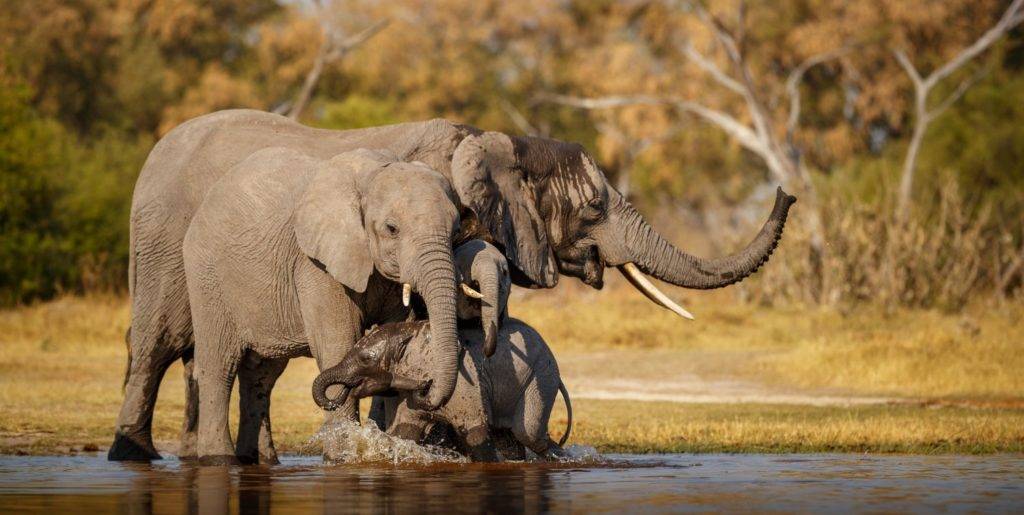
REQUEST YOUR TANZANIA SAFARI
Choose from our selection of carefully curated experiences or request a custom safari.
Best season To Visit Tanzania
There are two main seasons to visit Tanzania, whether you are planning a safari, hiking Kilimanjaro, or experiencing Zanzibar’s beaches: the dry and wet seasons. Tourism activities in Tanzania are highly influenced by the seasons. Understanding the seasons will allow you to explore Tanzania’s wonders to the fullest.
The best season to visit Tanzania is during the dry season, which runs from late June to October. This season is characterized by dry weather, making it ideal for outdoor activities in the country. The dry season is the best time for safari goers. During this period, you can experience the migrating wildebeest from July to September. Game drives are also superb as animals tend to congregate around water holes, providing the perfect chance for predators to hunt their prey.
If you have ever wondered best season to visit Tanzania, we recommend traveling to Tanzania during the dry season from June, July, August, September, and October
Best season to visit Tanzania by month(Dry Season/Months)
Peak Season: January sees the western parks such as Gombe, Mahale and Kavati likely to have continuous rain throughout the wet season; trekking surfaces can become muddy and sometimes even impassable so chimpanzee treks are more difficult. Despite humidity also being very high, you don’t feel the heat so much at Ngorongoro Crater due to the high altitude, this is probably the best place to spot rhinos.
Late January is a great time to see the calving season begin with antelope, zebra and wildebeest delivering their offspring while the landscape is green and there is plenty of water in the parks.
If you want to combine your safari trip to Tanzania with a beach visit, January is a good time to head to Zanzibar, the sea breeze tempering the high humidity making it a pleasant place to soak up some winter sun.
Peak Season: As with January, the rains depend on your whereabouts in Tanzania. Northern parks are likely to see drier periods while western parks remain fairly rainy throughout.
February is definitely the best time of year to see wildebeest calving; you may have the opportunity to watch young take their first steps.
This usually happens in Ndutu in the southern part of the Serengeti where millions of wildebeest congregate to feed on the grasses and give birth to their calves, around 500,000 wildebeest calves are born. Although they can be somewhat unpredictable, Greater and Lesser flamingos around Lake Natron at this time of year.
Peak Season: July is an ideal time for a safari in Tanzania, particularly in the renowned Serengeti National Park where the great migration unfolds in all its grandeur. Witnessing thousands of wildebeest and other animals crossing the Grumeti River is a breathtaking spectacle.
The dry season ensures optimal game viewing throughout the country, including the diverse wildlife in Tarangire National Park and the captivating Ngorongoro Crater. Expect pleasant weather with mild temperatures and little rainfall, making it comfortable for exploration. As this is a peak season, it’s advisable to book accommodations well in advance to secure the best options and fully immerse yourself in the wonders of Tanzania’s wildlife and landscapes.
Peak Season: August is an ideal month for a safari in Tanzania, particularly in the Serengeti where the Great Migration unfolds, showcasing vast herds of wildebeest and zebras crossing the Mara River. The dry season ensures excellent wildlife visibility, as animals congregate around water sources, making for exceptional game viewing during safari excursions.
With warm and dry weather prevailing, ranging from 20 to 30 degrees Celsius, the landscape is characterized by sparse vegetation, simplifying wildlife spotting. Consider exploring the Ngorongoro Crater for its high concentration of wildlife. Additionally, embrace cultural experiences with local tribes, and ensure to take necessary malaria precautions. Given the popularity of safaris in August, advance bookings for accommodations are recommended to secure a comfortable and immersive safari experience.
Peak Season: September remains dry with low levels of humidity, daytime temperatures sit around 28°C and only really dropping to 15°C in the evenings, so you will only need fairly lightweight layers on morning and evening game drives.
In September, it is possible to catch wildebeest and zebra crossing the river and Masai Mara as they head back south from Kenya, depending on water levels and rainfall.
The latter end of the dry season also sees the beginning of better sea visibility off the coast of Zanzibar making it an excellent time to snorkel and dive. The east coast hosts the Bagamoyo Arts Festival in September celebrating with traditional dance, music and performances as well as art exhibitions and workshops.
Peak season. The migration is now in Kenya, but the game viewing in central Serengeti is still very good. Southern parks are particularly rewarding at this time of year.
Get inspired with Our Tanzania Safari Packages
WILDEBEEST mIGRATION SAFARI PACKAGES
TANZANIA LUXURY SAFARI PACKAGES
TANZANIA MID-RANGE SAFARI PACKAGES

Meet Allano, the founder of Active Wonders Safaris Tanzania, a tour company dedicated to crafting transformative safari adventures for more than a decade. Allano, hailing from Tanzania, nurtured a profound connection to the region’s cultures and customs since childhood.
Join his odyssey and discover the essence of the African Safari encounter.


